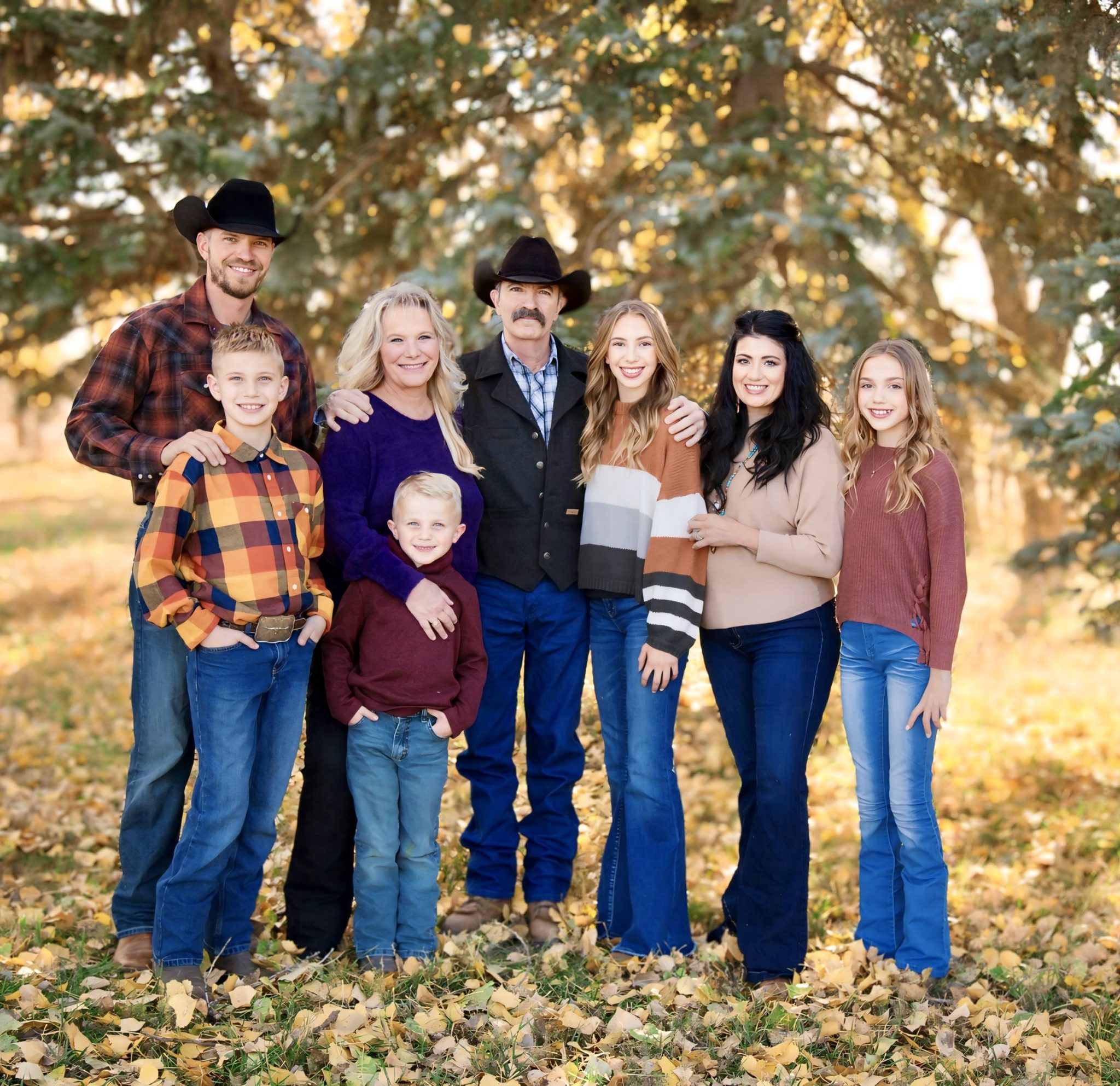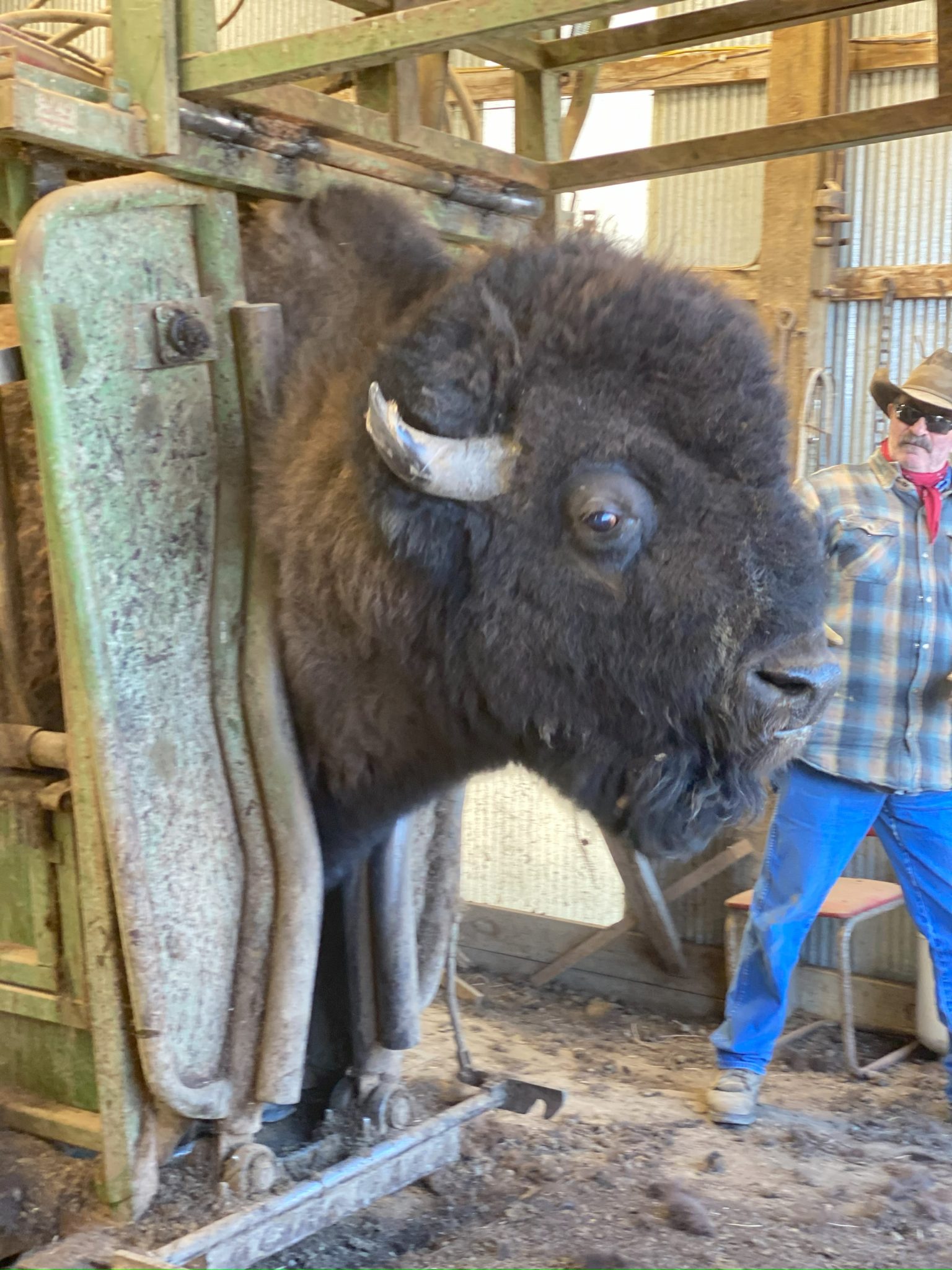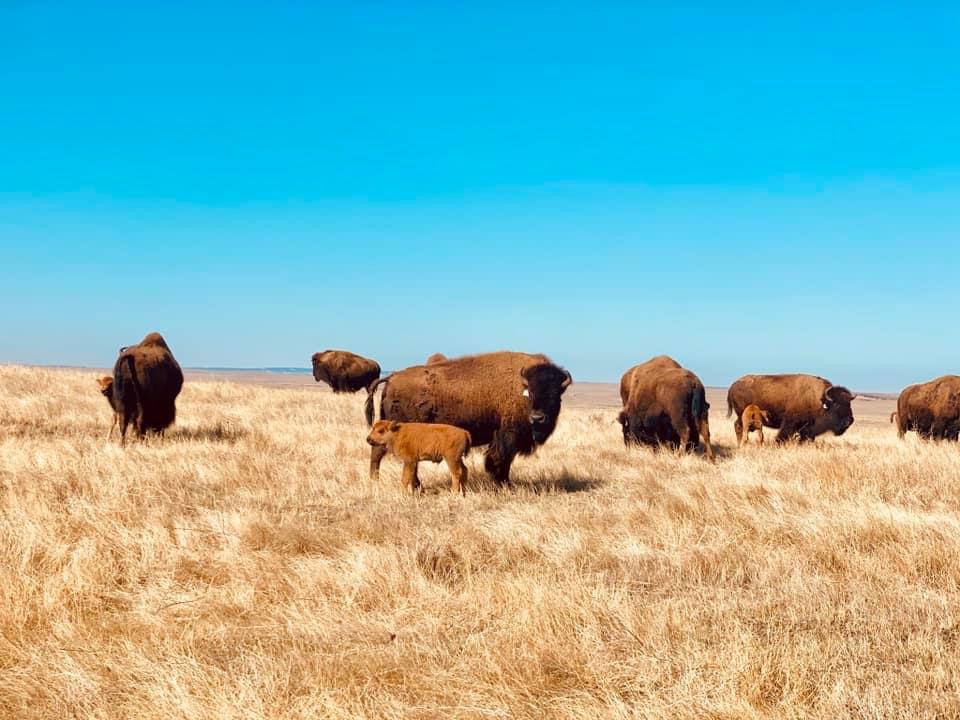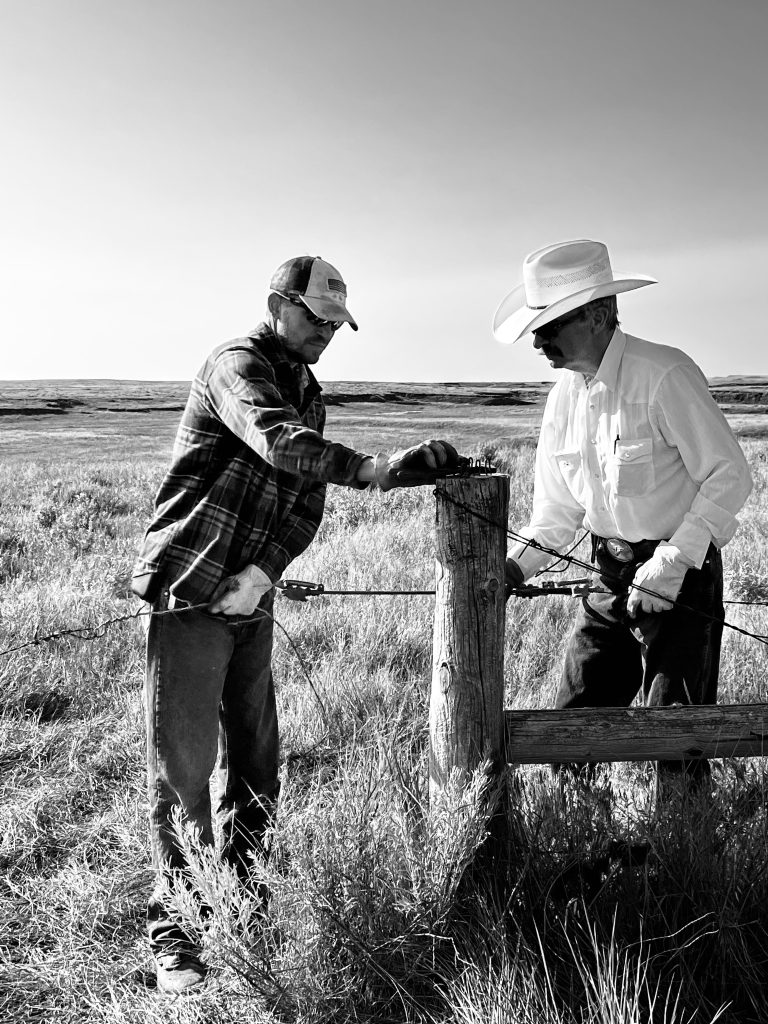Limpert Ranch Family

By Lura Roti for South Dakota Farmers Union
Located between the ranching communities of Buffalo and Bison, Slim Buttes Ranch is home to one of the nation’s largest buffalo herds.
And the family who raises them say these majestic animals saved the ranch that has been in their family since it was homesteaded more than a century ago.
“Before we got the buffalo, we had sheep and cattle. It was a constant battle to keep them alive with coyotes and weather,” explained Sandy Limpert, a third-generation Harding County rancher. “We can’t compete in the marketplace with Brazil producing beef. We were working ourselves to death and not making a profit. We needed to make a change to something with more of an upside.”
Sandy and his wife, Jacki, had heard that unlike cattle, buffalo calve on their own, can defend themselves and their young from predators and they thrive in the weather extremes of the Northern Great Plains. The biggest challenge facing the couple in 1989 was finding the capital to convert their family’s cattle and sheep ranch to buffalo.
“It’s very capital intensive and it’s tough to go to your banker and say, ‘I’m going to buy this buffalo heifer and it’s going to be three or four years before we get any income out of it.’”
To make their annual loan payments, the Limperts had to get creative.
“We would buy 100 buffalo heifers, keep records on them and sell 50 of the lower performing heifers,” Sandy explained.
In addition to keeping their banker happy, keeping performance records from day one helped them improve herd genetics.
“Genetically, we have come a long way in 35 years,” Jacki said. “When we started, almost no one kept records on buffalo. And there was a lot of inbreeding and undesirable genetics – which makes sense when you think about the fact that the pool was not that great to begin with since all the buffalo today come from only about 1,000 that were left behind after the railroads killed all the rest off.”



Growing up on a cattle operation, Sandy understood the important role genetic selection plays in overall herd success. So, he and Jacki were determined to find a buffalo producer who felt the same way.
This led them to Doc Ken Thorlson, a North Dakota veterinarian and buffalo producer.
“He is one of our greatest mentors,” Jacki said.
“We spent the whole day with him,” Sandy added. “He sold us six bulls. Buying those bulls from him was the best move we ever made. At the time, those were some of the best bulls in the nation.”
Today, Slim Buttes genetics are sought after among buffalo producers. Because of careful genetic selection, the Limperts were able to increase the herd’s average rate of gain in the feedlot from 1 pound a day to 3 pounds a day. They cut the time from birth to harvest nearly in half.
“We’ll start sending our own buffalo to the processor at 17 or 18 months, but the buffalo we buy from others will be closer to 30 months before they are ready,” explained Brodie Limpert, Sandy and Jacki’s adult son. Together with the help of longtime employees, Aaron Moenkedick and Zach Gardiner, the family also operates a feedlot on the ranch.
Together with the buffalo they purchase to finish, the family ships a truckload of buffalo each week to Colorado to be processed by a family-owned company. Great Range Premium Bison supplies bison to Costco, WalMart and other retailers.
“Demand is always higher than supply. Most weeks they are only able to fulfill 45 percent of their orders,” Jacki said.
There’s no herding buffalo
Like cattle, buffalo are ruminants. Their four-chamber stomach may be where the similarities end.
“When we got rid of our cattle and got into buffalo, our biggest learning curve was that we tried to treat buffalo like beef, and you just can’t,” Sandy said. “There’s no making them do what you want them to do. You can’t chase a buffalo. You must persuade them.”
The family quickly discovered the best way to move buffalo is to train them to follow the cake pickup. Each morning around 7:30 Sandy drives out to where the herd is grazing and gives them a vitamin-rich feed supplement.
They only work the herd at weaning in early December. This is also when they are preg-tested. Bulls are put in with the cows in June. Because of their dominant nature, a buffalo herd requires about two times more bulls than a beef herd.
“During breeding season, the bulls exert a lot of energy fighting off other bulls,” Brodie explained. “The older bulls are the dominant bulls. The young bulls, they won’t get much breeding done, but we leave them in to keep the old boys working.”
A buffalo cow will start raising calves at 3 and continue until they are about 25. The Limperts’ buffalo calve mid-April through May. The typical success rate is 95 to 97 percent.
Because buffalo do not need assistance during calving, the Limperts have been able to increase their herd size to more than 1,700 without hiring more help. Today, the family along with Moenkedick and Gardiner are able to manage the grazing herd and buffalo in the feedlot.
Today in South Dakota, about 100 producers raise 33,995 head of buffalo. But in the late ‘80s when the Limperts got into buffalo there were far fewer producers. And with the young industry came extreme growing pains, Sandy explained. “In 2000, we were in a drought and the buffalo cooperative we had been selling our finished animals to went near bankrupt, and we had no where to sell our buffalo.”
Decisions they made a decade earlier helped them survive.
“When we started in the buffalo in 1989, Sandy wanted to keep more control. As we built our herd, we also decided to finish them here on the ranch and put in a feedlot,” Jacki explained. “When things went down, we had the ability to feed the animals and not have to sell our calves at the bottom of the market. We also custom fed for other producers and this helped with cashflow.”
The Limperts stopped delivering to the cooperative and began delivering finished buffalo to a processing plant in Rapid City. When the Rapid City plant closed, they began delivering one load a week to Great Range Premium Bison in Colorado.
At the same time, consumer demand for bison went up thanks to a popular restaurant chain.
“I give a lot of credit to Ted Turner,” Sandy said. “He started Ted’s Montana Grill. There were 45 restaurants and people eating bison and having a good experience.”
Today, buffalo producers impose their own checkoff of $1 a head to fund promotion of the product through the American Bison Association.
“Once someone has a good experience eating bison, they are hooked,” Sandy said. “We visit with the meat manager at a grocery store in Spearfish and he tells us that it doesn’t matter what the price per pound on buffalo is, people come in and buy it and don’t complain about the price.”
And because the processor the Limperts work with is family-owned, processor profits trickle down to the producer.
Restoring grassland health
Replacing their cattle herd with buffalo is not the only change the Limperts made. They began putting in the infrastructure necessary to implement rotational grazing.
“We move them every seven days – so the pastures only get grazed seven days out of the year,” Brodie said. “By making them utilize a smaller pasture for a week we are able to increase our carrying capacity and we improve our ground. We have noticed a lot of new grass species reappearing.”
And compared to beef cattle, you can raise 23 percent more buffalo on open range because mature buffalo are smaller.
The ranch had about six pastures when Sandy was growing up. To implement rotational grazing the family has expanded to 40 pastures, drilled wells and installed more than 250 water tanks.
“There’s a lot of things we do different today,” Sandy said. “You know you have to change and adapt to grow. I believe if you keep doing the same thing your whole life, the same things as your dad or granddad did, nothing is going to change for the better – for the future.”
At 37, Brodie said he is able to ranch today because of his parents’ forward-thinking approach to the future of Slim Buttes Ranch.
“I’ve always loved the lifestyle and the buffalo. I’ve been here my whole life, and I never wanted to be anywhere else,” Brodie said. “You know I have classmates who would have liked to come home too, but there’s no room for them on their ranches. My parents are not retirement age yet, so if it wasn’t for the buffalo and some of the practices we started 25 years ago, I would not be able to be here either.”
Brodie and his wife, Halona, have four children: Zoey, 13; Zaylee, 12; Roman, 9; and Tyden, 6. The family lives down the drive from Sandy and Jacki.
“There’s no better lifestyle for the kids to grow up in,” Brodie said. “On the ranch they get to do something different and learn something different every day.”


